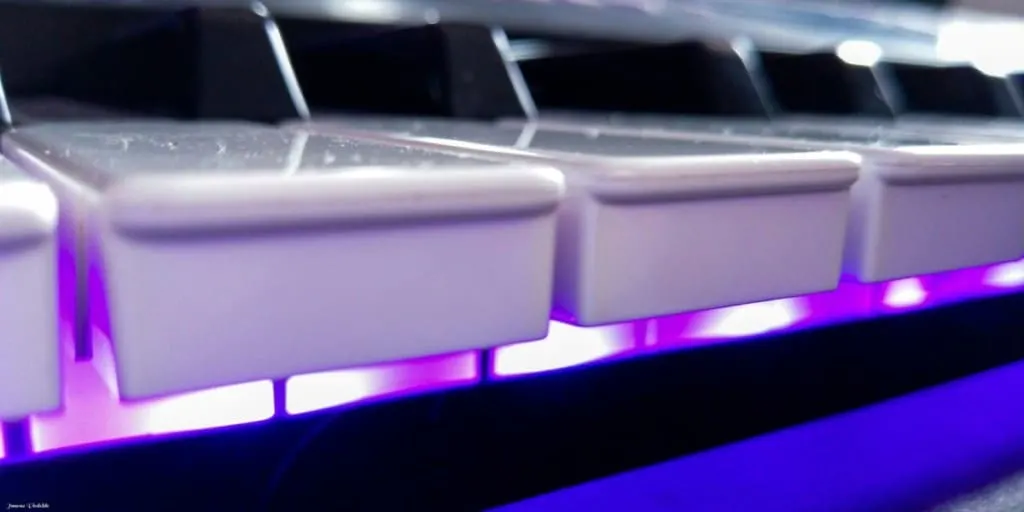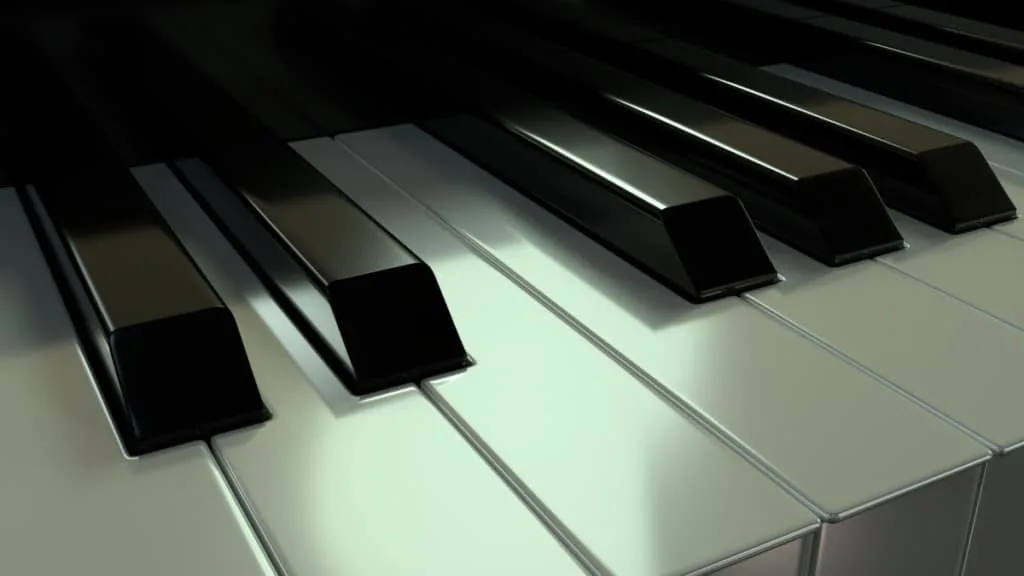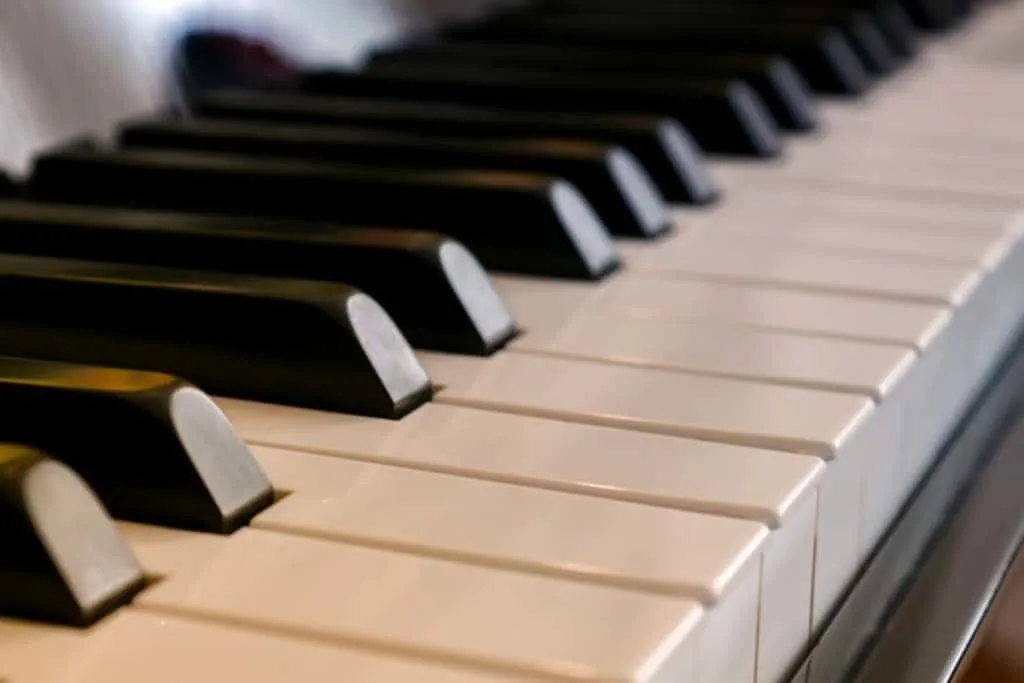Buying a digital piano can spare you from way more than one headache. When I tell my colleagues I still keep a wooden, classical piano in the studio, they tell me I’m crazy.
In fact, most of them got rid of the problem of servicing a classical piano long ago. They rely entirely on digital pianos and MIDI controllers to get the best sound in their recordings. My dark little secret is having both and panning one to each side of the mix. That’s exactly how and why I learned the do’s and don’ts of digital pianos as well.
So, do digital pianos require servicing?
Yes, digital pianos require servicing; just not as much as classic, wooden ones. This is because, contrary to what most people think, digital pianos do demand to be taken care of to work properly. From cleaning to checking connections and general maintenance they need grime, dirt, dust, and dead skin cells kept away.
I know, you are just as anxious about it as I am. Let’s dive straight into this deep topic so I can share with you the secrets I’ve spent years acquiring.

Do Digital Pianos Require Servicing?
A digital piano is a musical instrument.
Servicing is something every musical instrument needs every now and then. Although a digital piano can last anywhere from 20 to 50 years, most people don’t keep them for so long.
Some of the digital piano owners are not even pianists or enthusiasts, they just buy it because they want to be. Many times that piano ends up being used in mint condition for sale on an ads website. Worst case scenario it will be forgotten and put away for good.
As you might know, most digital instruments are divided into two main areas: hardware and software.
· Hardware – This is what we could call the “user interface” of a digital instrument because it is the often mechanical input mechanism we have. For example, if it’s virtual drums you get pads to hit, in the case of a digital piano, it’s obviously the keys. For digital guitars and basses, you get buttons and fantasy frets. This is what suffers the most, the vulnerable part of it.
· Software – This other part refers to the digital mechanisms in charge of creating the sounds, the banks where you store your sounds; the very brain of your digital instrument. This part consists of no moving parts usually and can only be reached by electric power. This is the section that usually suffers close to zero unless there is a current problem (like a peak) or a new software update.
So, as you might have guessed, almost the entire blog post is going to be dedicated to protecting the parts of your digital piano that suffer the most: hardware. We are also going to go through a do’s and don’ts in each piece so you know which behaviors to avoid and which to embrace.

Find The Perfect Spot For A Digital Piano
This is truly starting from the very beginning to take care of your digital piano. Bear in mind that the more care you have with it, the more you’ll avoid servicing it in the near future.
The first recommendation for do’s and don’ts is to check the place the piano will be located.
You want to look for a spot in a preferably smoke-free room. You also want to look for a spot that is not too hot or cold and that is comfortable for you to play. Bear in mind that a digital piano is a musical instrument and as such, you should be playing it very often.
If you store it in a place that doesn’t work for you in terms of comfort, you’ll be playing less than you would if it was in a different location.
My trick when I began my piano training was to always put it in a spot where I would go to very often (yes, my piano was in the kitchen in my first apartment). Just seeing it every day was, sometimes, reason enough for me to play a note, then two, then a chord and before I knew it I was playing for an hour.
Ok, But What Are the Things to Avoid With A Digital Piano?
· Kids – As much as I love children (I have two), they have a hard time understanding that it is not a toy. I mean, their reasoning is completely valid; it does have a screen, lots of different lights, and makes noises when you press the keys. So, my recommendation is for you to avoid kids using it as a toy. Once I got my eldest son convinced he can make beautiful sounds with it, he asked me to go to classes.
· Pets – Pets are great too, but they are just not digital-piano friendly at all. Let me tell you that if you are lucky enough to have a digital piano with a wooden stand, then pets will find it irresistible.
· Doors And Windows – This might seem like a no brainer to many, but I don’t mean to put it out of the way of doors and windows so it won’t be smashed. These are the main sources of dust, sunlight, and other particles coming from outside.
You want to keep the keyboard of your piano as clean and dust-free as possible. Also, plastic and sunlight are not best friends. Your digital piano can suffer from direct sunlight exposure on a daily basis. This suffering is not only weakening the outside plastic parts (nowadays virtually the entire instrument) but also heat can reach inner circuits and they don’t get along at all.
I keep it in my studio. Whenever I had to take it to several gigs I was smart enough to keep its original box and foaming, so every time I move it I do it like the company did when it came out of the factory. If it survived crossing the ocean on a ship, it will survive the back of my van. You can also buy a fancy hard case for it if you plan to move it a lot. It is a definite must to protect it when on the road.
- Take a look at my article that discusses “who makes the best keyboard” in my article. You may wish to start with an inexpensive keyboard rather than a digital piano!
You can find this article here.
Top 10 Digital Pianos And Keyboards
There is an incredible range of options for both digital pianos and keyboards, it can be quite a minefield!
I wanted to list my top ten options for digital pianos and keyboards for this year, so here we go!
This is a varied selection based on different price ranges and sizes. Be sure to take a look at them all to see which style would suit your needs the best.
Take a look at all these items on Amazon.
- Roland RD-2000
- Yamaha YDP184R
- Kawai KDP-75
- Yamaha CP88
- Casio PX 870
- Nord Stage 3
- Korg Grandstage 88
- Casio PX -S3000
- Roland -DP603
- Yamaha DGX660
Everyday Maintenance Tips For Digital Pianos
It doesn’t matter just how beautiful your digital piano is; it is not a piece of fine furniture.
You should not use any household products because they contain harsh chemicals that can damage the outside and, even worse, get in the insides and require servicing for a damaged circuit board. One of the most important do’s and don’ts is not to use any harsh chemicals on the digital piano’s surface.
So, what do you clean it with? We are going to go through the products and a DIY formula I’ve learned to love in just a few paragraphs. First, let me tell you the everyday cleaning tips that work for me:
There are a lot of parts inside a digital piano. Take a look at this video!
Wash Your Hands
This is of paramount importance: you have to wash your hands before you play; moreover if you are going to be playing for an extended period of time. If you take all the grime, dirt, and dead skin cells from your hands to the keys every day, you might end up with an amount of accumulated unwanted particles that will surely damage your piano’s mechanisms and might even get into the circuitry to cause even more harm.
So, the golden rule of piano playing at home is to always wash your hands before you start playing. I also keep gel alcohol next to it for proper disinfection, but that is just me; washing your hands is good enough.
Keep A Microfiber Cloth Next To Your Digital Piano
Ok, you’ve washed your hands time and time again, hence there should be nothing on the piano keys making them filthy, but suddenly you start noticing that there are stains on them. This is because you should always clean the keyboard with a microfiber cloth after playing to remove the sweat from your fingers.
Sweat gets into the pores of plastic keys and discolors them. It can also weaken the material with time. Why a microfiber cloth? Because they don’t leave any debris behind. If you use a regular cloth every small particle left behind from every time you’ve cleaned your keyboard (adding up to a lot!) will be safe and sound under the keys doing what you are trying to avoid.
Always Keep Your Digital Piano Covered (when not in use of course!)
I can’t stress this enough: get a good piano cover. It´s so important because no matter who you are and how many hours a day you play, your piano will always spend more hours idle and covered than in use.
During this time anything can go inside of it with no proper coverage. Getting a vinyl cover you can also guarantee that no moisture or water can reach the mechanism. As most of us know, vinyl is completely waterproof.
The fact that you might use it later should not be reason enough to leave it uncovered. This is also very important. Make sure you create the habit of covering it before you stand up. The more rigorous you are in forming this habit, the less professional servicing you will have to do to it.
Here’s an example of a digital piano cover.
Digital Piano Connections Maintenance
A digital piano has some connections that need observing. Some quick tips about these connections will ensure a great life for your digital piano. Let’s take a look at what you should do:
· Get a tension stabilizer – Have you ever heard about these before? What they do is to stabilize the current coming from the wall and make it continuous. Make sure you plug your piano adapter to one of these so you can avoid any kind of peaks or valleys in terms of tension and protect your piano.
· Unplug your digital piano when not in use – This is another major issue that most people overlook. If you don’t unplug your piano when not in use, you can encounter several problems like someone tripping on your cables and destroying either the connection, just the cable, or bringing your precious piano to the floor. Also, when idle and connected, unless you have a stabilizer in place, your piano can suffer an electrical power peak that might break an internal component.
· Try using the socket only for the digital piano – There are many, many people talking to me about how much noise, interference and problems they have with their digital pianos. My first question is “where is it plugged in” and sometimes people plug it next to noise-inducing apparatus like a laptop charger or a high-consuming one like a fridge. This will definitely affect the performance of your digital piano for the worse.
- If you decide to buy a used acoustic piano instead, please take a look at my buyer’s guide.
You can find this article here.
Thorough Maintenance Tips For A Digital Piano
Now that we’ve been through some of the most important tips on how to maintain your piano on a daily basis, it is time to tackle on digital piano thorough clean-up methods.
Every now and then, maybe every month, I do some servicing myself. I block an hour away on my daily plan and go for a thorough clean of my digital piano. I proved that taking this extra time allows me to stretch the time between servicing for years. So, among the do’s and don’ts for digital pianos, it is important to take some time every month to go deeper in your cleaning.

Best Homemade Cleaning Products For A Digital Piano
Remember I told you to stay away from household elements that can damage your piano? Well, there are plenty of specific piano products out there. However, I found the best results through this homemade recipe. The materials you need are simply warm water and a few drops of non-abrasive dishwashing soap inside a small bowl. Just make sure you mix it well.
Clean the keyboard
Next in line, you need to get two white microfiber cloths and some Q-tips. It is important that they are white because colored microfibers are dyed with chemicals that can damage your digital instrument.
1. Take one of the microfibers and put it in the soap and water until it is damp, not wet. Use it on the first section of the keyboard (let’s say two or three octaves) to thoroughly clean all the keys.
2. Dry the keys right away using the other microfiber cloth. Don’t let too much time go by otherwise moisture from the first cloth might go inside and cause rusting problems.
3. Use a Q-tip for the places you can’t reach with the cloth and that you notice that need cleaning. The Q-tip needs to be perfectly dry. If you are going to use it with a tiny bit of soap water (which I don´t recommend) make sure you dry it straight away with the dry tip on the other side.
4. Repeat the action throughout the entire keyboard utilizing Q-tips to get to the places you can’t with the cloth.
Bear in mind that every drop of soap water you leave behind is potentially going inside and creating rust over delicate mechanisms. Dry your digital piano as much as you can.
Storage Tips For Digital Pianos
This is a must that we need to discuss. Let’s say you are going on a vacation for three weeks. You are lucky enough to book a resort in the Caribbean and there you go with your entire family, decided to have a great time. You put all your guitars back in their cases; unplug computers, television, and all electrical appliances. What do you do with your digital piano?
Well, the answer to that question in my case is fairly simple because I kept the factory packaging, so I return it to that box. If the company took all the measurements of the piano and decided it would reach the customers in top shape using it, who am I to disagree, right?
In the case that you can, always make sure you keep the original box. If that is no longer an option, make sure you wrap it in a moisture-free material while you are gone. Avoid storing it in humid places like basements and attics.
Before concluding this article, I want to share with you a thought I had while writing it.
My question to myself was why to take care of a product that is digital and will become obsolete with time?
If you are not familiar with the term, it means that products becoming obsolete and replaced by newer, more capable ones is something that is planned right from the start. So, we don’t really change our digital pianos due to them being broken or no longer working, but because we want a more modern version of it.
This is the way the modern world works. How can we break the programmed obsolescence trend with our digital piano? Well, simply by taking great care and adding extra years of working life to it. Your piano doesn’t have to be obsolete in twenty years, it can teach your children how to play.
Conclusion
Besides the obvious like avoiding food and drinks on a digital piano all the information given above is sure to keep your instrument working properly for many years. You can stretch the years between servicing following the do’s and don’ts; actually following the do’s and avoiding the don’ts.
Take good care of your digital piano and let it make you happy for many years to come.
Happy (dust-free) playing!
